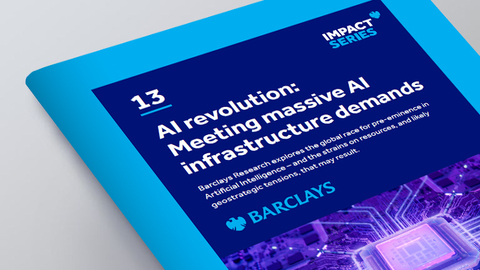Barclays Research Estimates That AI Could Drive US Data-Centre Usage to Triple by 2030
A new Barclays Impact Series report explores the global race for pre-eminence in Artificial Intelligence – and the strains on resources, and likely geostrategic tensions, that will result.

AI revolution: Meeting massive AI infrastructure demands (Photo: Business Wire)
Barclays’ estimates for data-centre usage are significantly above current consensus and the report examines the consequences of such rapid AI expansion for the world’s ambitions to cut greenhouse gas emissions. The report argues that efforts to conserve power through efficiencies can likely only go so far in offsetting the proliferation of AI.
“The balancing act between achieving emissions targets while allowing responsible AI technology to advance is a global challenge,” says Christian Keller, Head of Economics Research. “Policymakers, tech companies and the energy industry must forge new partnerships to deliver AI that is socially beneficial and environmentally sustainable”.
Barclays analyses the projected growth in consumption driven by AI, the urgent questions raised by the significant infrastructure demands of the technology, and how the public and private sectors may collaborate to deliver AI responsibly and sustainably.
Barclays’ Impact Series uses data-driven analysis to explore economic, demographic and disruptive changes affecting markets, sectors and society at large. The key findings of today’s report include:
-
Energy Use Today: Data centres currently consume
1.0% -1.5% of global electricity, excluding crypto currencies (IEA, mid-2024) -
Future Energy Demand in the US: AI could drive US data-centre use to triple by 2030, from 150-175 terawatt hours (TWh) in 2023 to 560 TWh – equivalent to
13% of current US electricity demand. - Implications for Net-Zero targets: AI and data centres could provide a much bigger spur to global electricity demand than was initially factored in to net-zero targets.
Click here to read the full report.
About Barclays
Our vision is to be the
View source version on businesswire.com: https://www.businesswire.com/news/home/20250116673538/en/
Press:
Claudia Gilbert-Allen (
+44 (0)20 7773 2064
claudia.gilbertallen@barclays.com
Source: Barclays







